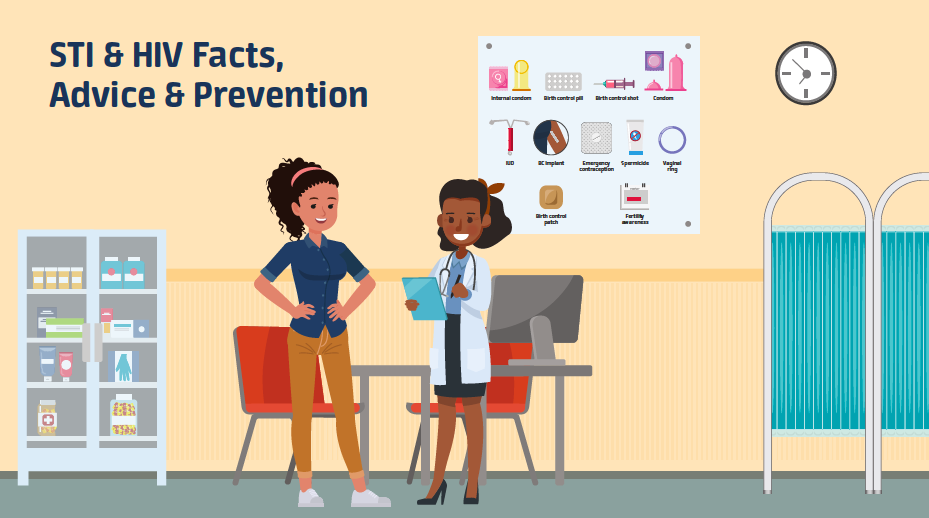Did you know that more than 20 million new sexually transmitted infections (STIs) get diagnosed in the United States every year? Every time you have unprotected vaginal, oral or anal sex you may be at risk for STIs or HIV. You may also be at risk for HIV if you share needles or syringes.
Here’s the deal: The only sure way to prevent STIs is to not have sex. However, if you are sexually active, there are lots of ways to reduce your risk. You can:
- Use condoms. Remember that condoms are the only form of birth control that also protects against STIs. The pill and the IUD can help you prevent pregnancy, but they won’t reduce your risk of sexually transmitted infections.
- Use a water-based lube with condoms. Most condoms are made of latex, and oil-based lubes can damage the latex, making the condoms less effective.
- Get yourself and your partner screened for STIs before you start having sex. Some STIs don’t have any symptoms so you might not even know if you have one.
- To reduce your risk of HIV, don’t share needles.
- If you’re at risk for HIV, consider PrEP (pre-exposure prophylaxis), which can lower your chances of getting HIV.
Want to learn more about reducing your risk of STIs? Make an appointment at a NJFPL provider health center today. Find the nearest center to get started.

